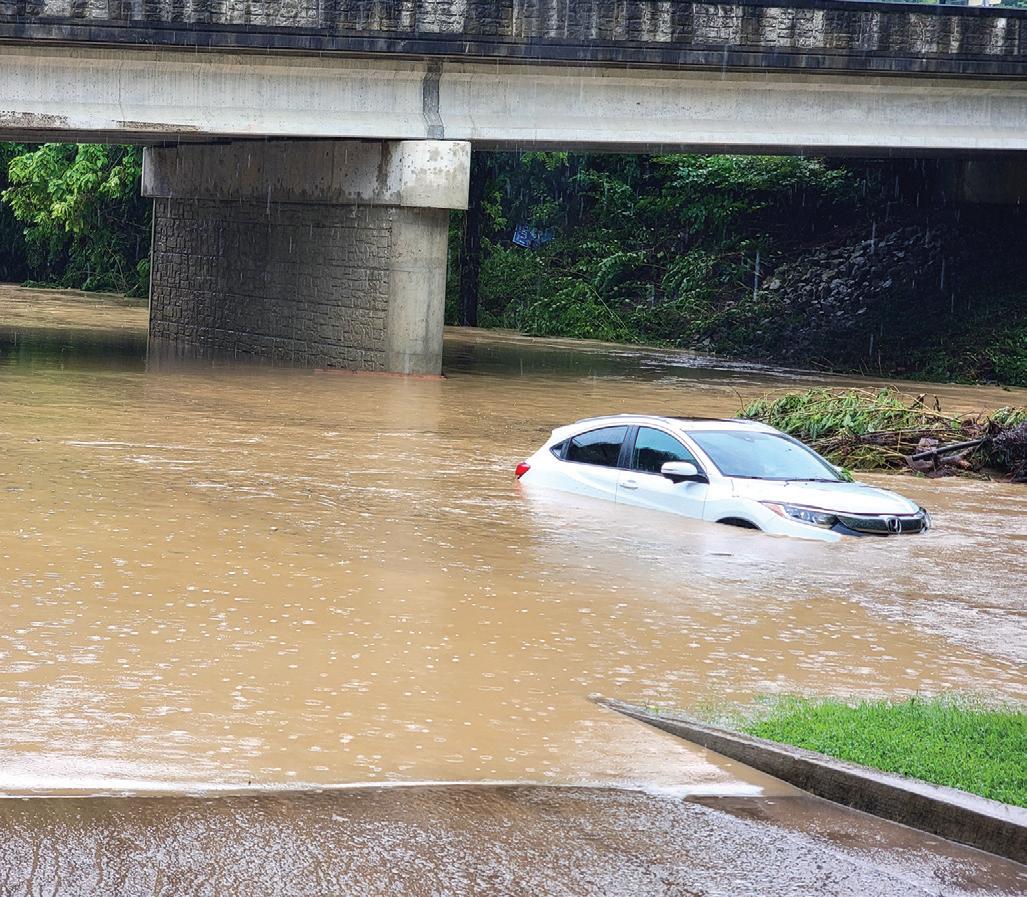
3 minute read
Setting the Record Straight
BY TINA V. BRYSON
In late July 2022, a catastrophic flash flood claimed the lives of more than 40 people and devastated homes and communities in Central Appalachia. The 45th annual Appalachian Writer’s Workshop at Hindman Settlement School in Eastern Kentucky was in progress at that time. The school lies at the forks of Troublesome Creek in Knott County. As the floodwaters receded throughout the region, countless lives were forever changed.
From that experience was born an anthology called Troublesome Rising: A Thousand-Year Flood in Eastern Kentucky. Melissa Helton, literary director at Hindman, edited this work from well-known and emerging Appalachian writers who were able to share the depths of the flood’s devastation through their own lens.
“It had rained, and rained, and rained. The ground was already completely saturated. The rivers and the creeks were already running high,” Helton recalled. “At 2 a.m., everyone was sleeping, and the alerts started to come in.”
Fortunately, one of the writers was restless and saw that the water was rising very quickly. Because the others were alerted immediately, many were able to move to higher ground. “The water came in hard and fast. The electric was out. It was in the middle of the night; you could only assess where the water was or what was happening by the lightning flashes,” Helton said.
“Troublesome Creek is about 4 inches deep today,” she added. “During the floods of 2022, it crashed through campus at 20 feet. It’s just hard to imagine when you see water that is inches today and imagine it 10 feet over your head. To see a place that you love be destroyed is traumatizing.”
After the writers were safely off campus, there was finally a Wi-Fi signal in the community. Staff from Hindman planned a Zoom call two days after the flood.
“We wanted to check in on our friends. Someone made a joke about ‘When is the anthology coming out?’”
Helton recalled with a smile. “If you have 100 of the region’s best writers go through a flood, it’s going to be well documented. And not only the writers here, but the ones that weren’t here. Thousands of writers who have come through Hindman.”
Helton recalled a conference keynote from Dorothy Allison, who said, “We write to set the record straight.” That thought stuck with her and summarized the spirit of bringing this work together.
“When you’re able to tell your story, there’s power for you as an individual — but also, you’re setting the record straight. And especially in Appalachia, where outsiders came here and told the rest of the world what Appalachia was like. Now Appalachian literature is more nuanced. We’re seeing a broader, deeper picture of things.”
Helton invited 60 contributors of poetry, fiction, nonfiction, and photography to participate. “When you have such an extensive writing family, who do you ask to be a part of the project? Some of the people I asked to contribute, couldn’t,” she said. “Some of them couldn’t stop writing about the flood, and some couldn’t start. It was just too soon. It was just six months after the flood. There are people who contributed to this project who received their first writing credit, as well as people with 20 or 30 books published. The flood didn’t care who you were. This was painfully relevant. This is not the last flood to ravage Appalachia. Hopefully, this offers a documentation, but also a mode of healing.”













